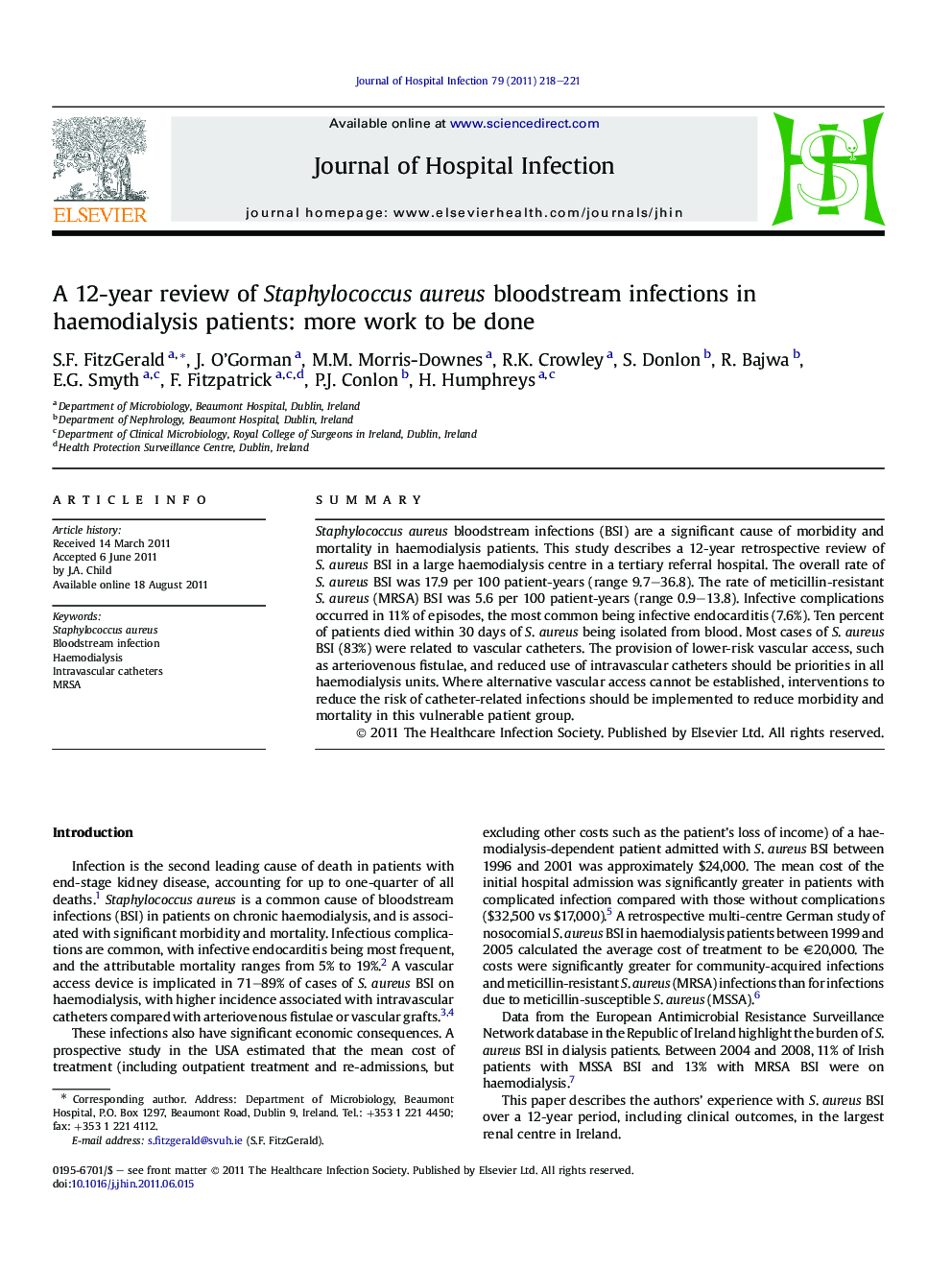| Article ID | Journal | Published Year | Pages | File Type |
|---|---|---|---|---|
| 3372086 | Journal of Hospital Infection | 2011 | 4 Pages |
SummaryStaphylococcus aureus bloodstream infections (BSI) are a significant cause of morbidity and mortality in haemodialysis patients. This study describes a 12-year retrospective review of S. aureus BSI in a large haemodialysis centre in a tertiary referral hospital. The overall rate of S. aureus BSI was 17.9 per 100 patient-years (range 9.7–36.8). The rate of meticillin-resistant S. aureus (MRSA) BSI was 5.6 per 100 patient-years (range 0.9–13.8). Infective complications occurred in 11% of episodes, the most common being infective endocarditis (7.6%). Ten percent of patients died within 30 days of S. aureus being isolated from blood. Most cases of S. aureus BSI (83%) were related to vascular catheters. The provision of lower-risk vascular access, such as arteriovenous fistulae, and reduced use of intravascular catheters should be priorities in all haemodialysis units. Where alternative vascular access cannot be established, interventions to reduce the risk of catheter-related infections should be implemented to reduce morbidity and mortality in this vulnerable patient group.
